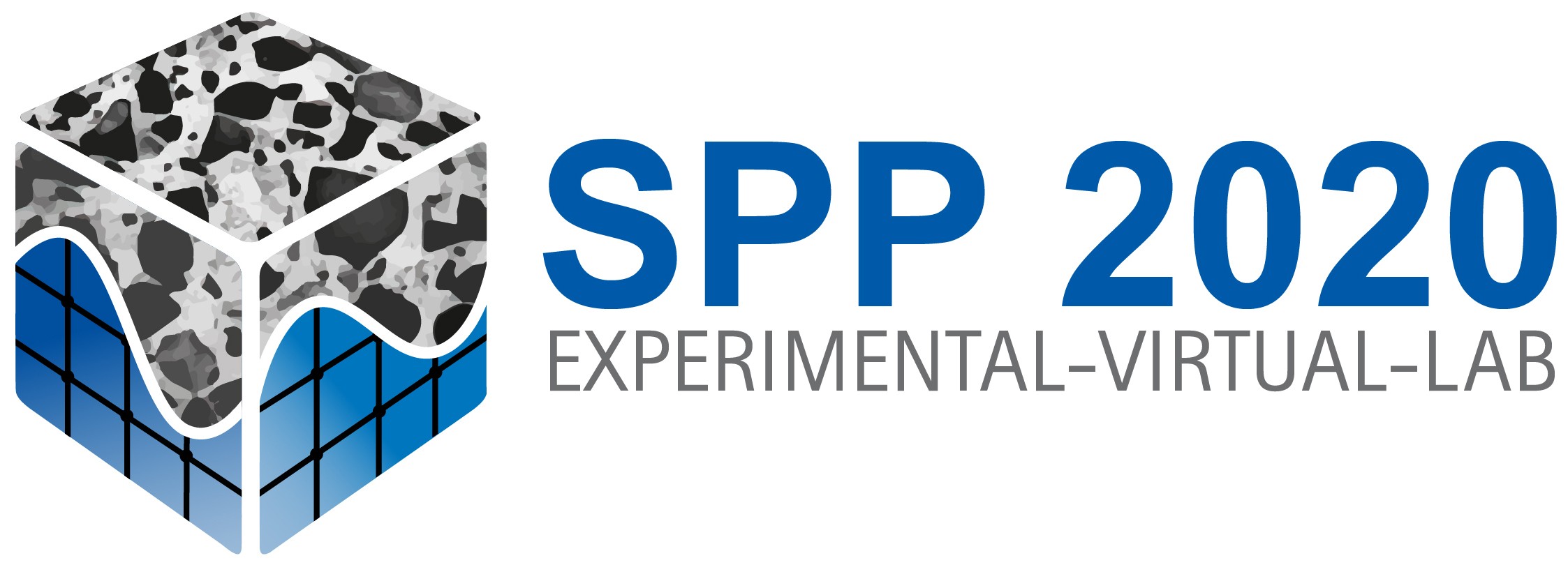The degradation of concrete (also fibre-reinforced) is described independently of load as a three-phase process of an accumulated, initially diffuse damage evolution (formation, growth and unification of microcracks) until progressive damage increase and failure occurs in a delimited area (localisation). With regard to the future goal of a Virtual Lab and Virtual Material Composing, degradations are to be mapped as realistically as possible by means of suitable modelling.
A promising carbon short-fibre-reinforced high-performance concrete developed at the University of Augsburg is used as an example material for this purpose. At the micro level, the material will first be optimised for cyclic loads by means of a parameter study (including the degree of fibre filling, orientation and packing density), whereby the material parameters will be determined on very small test specimens by means of dynamic mechanical analysis (DMA) and 3-point bending tensile testing. The microstructure will be analysed using 3D imaging tomographic methods (X-ray nanotomography, confocal Raman microscopy).
In damage assessment, these methods also serve to map micro-cracks that are entered in cyclic load tests. Mechanical and imaging analysis methods provide the basis for quantifying simulation parameters. At the macro level, innovative methods can now be used to record and characterise the damage in a differentiated manner both in terms of time and locally. For this purpose, continuous strain measurement is to be carried out on the test specimen surface (fibre optics, camera-based measurement technology) and this is to be linked with the degradation processes recorded inside by acoustic emission analysis and ultrasound.
The applicants expect great potential from this combination of sound-based and surface-based methods, which is being carried out for the first time. For modelling, an energy-based model is to be extended by essential parameters and applied to the high-performance concrete. Starting points are the spatial extension of the fracture process zone and the quantitative course of the diffuse damage. The transfer to the crack-band model and the determination of residual load-bearing capacities are expected to make a considerable contribution to a realistic degradation prognosis.
Finally, a structure-oriented numerical multiscale model will be developed for further understanding. Essential aspects are the fibre-matrix connection and structural changes (especially microcracks). Among other things, real structural geometries from CT examinations are converted into FE grids. The detailed validation of the models takes place on the basis of measurements on a macro level as well as microscopic examinations of small test specimens. The knowledge gained at the macro and micro levels and their combination form the basis for multi-scale modelling for other materials as well.
